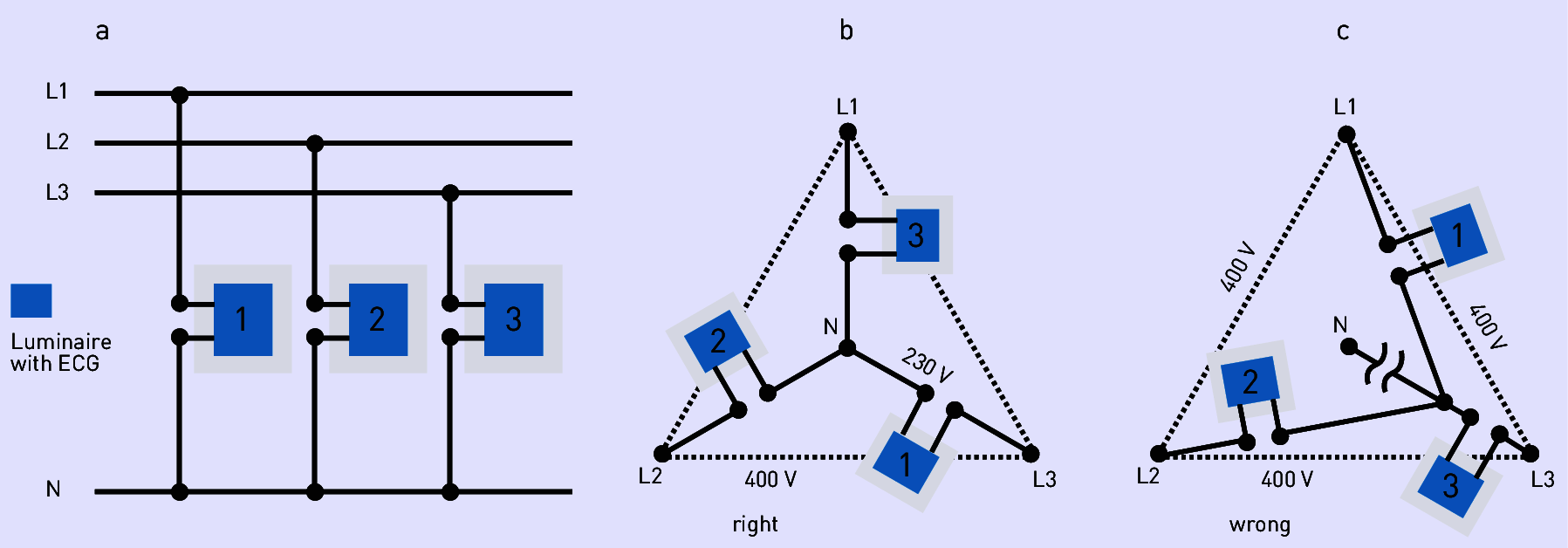In practice, the outer conductors L1, L2 and L3 as well as the neutral conductor N are interrupted at the disconnect terminal to measure the insulation resistance against the protective conductor PE. Before any subsequent commissioning, the neutral conductor terminal in particular must be reconnected. If this is neglected and the outer conductors carry different loads, elevated operating voltages of up to 400 volts can occur at the consumers. This can damage electrical equipment such as electronic control gear. Why is that? When the neutral conductor N is connected or the approximate same load is present at the outer conductors, the star hub in the voltage vector diagram is roughly in the middle, and the voltage at the consumers is 230 V (see figure). If N is interrupted, the star hub shifts and the voltage at the consumers with elevated load can rise up to 400 V.
Neutral conductor interruption

Figure 3.188: Luminaires in three-phase networks
(a) Connection of the luminaires/luminaire groups 1, 2 and 3 to three outer conductors L1, L2, L3 with shared neutral conductor N
(b) Star circuit network diagram with connected neutral conductor N: identical voltage at the consumers
(c) Upon interruption of the neutral conductor, the voltage at the consumers with higher output increases significantly